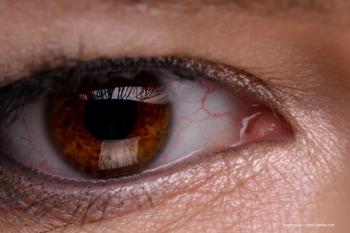
Patient case #1: 65-year-old patient with uveitis
Dr. Eduardo Uchiyama, MD reviews the case of a 65-year-old female with uveitis.
Eduardo Uchiyama, MD: Today I'm going to be presenting a case-based round table about the management of uveitis. My name is Eduardo Uchiyama from the Retina Group of Florida.
This is the case of a 65-year-old [white] woman who presented with mild flashes and floaters for about 2 years. She also complains of intermittent blurry vision in both eyes. Her past medical history was positive for osteoporosis, hypertension, and diabetes. She works from home and drinks 1 or 2 glasses of wine when she’s stressed. In terms of medication, she takes lisinopril, metformin, and calcium. On examination, her visual acuity was 20/30 and 20/25. Her IOP [intraocular pressure] was 15 on both eyes. She had mild inflammation in the anterior chamber. Her lens was 2+ NS [nuclear sclerosis] on both eyes. Her vitreous was 1+ cell and 1+ haze on both eyes.
On fundus examination, we see that in the periphery, the patient has multiple round hyperpigmented lesions on both eyes. The media appears to be clear, but on examination, she had some vitreous haze.
On OCT [optical coherence tomography] we see that the patient doesn't have macular edema, but there is some mild proliferation on the surface, perhaps narrowly at the retinal membrane.
On FA [fluorescein angiography] we see that the patient has perivascular exudation in both eyes, with a hard disc on both eyes.
ICG [indocyanine green angiography] angiogram shows multiple hypercyanescent lesions throughout the fundus in both eyes.
Transcript Edited for Clarity
Newsletter
Keep your retina practice on the forefront—subscribe for expert analysis and emerging trends in retinal disease management.















































